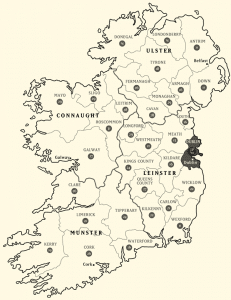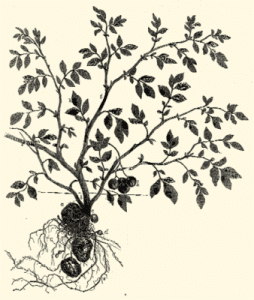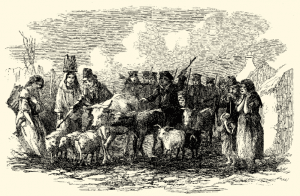The Great Hunger
Ireland’s Past – A Prelude to Disaster
 To fully understand The Great Hunger, its impact on the Irish people, and the resulting diaspora of the Irish nation, it is essential to examine both the history of Ireland and events leading up to the catastrophe. The twelfth century marked the beginning of eight hundred years of English rule and Irish resistance. Throughout the centuries, English laws were enacted to strip the Irish not only of their land, but also of their unique cultural heritage, their customs, language, laws,and religion. These unjust laws punished the Irish simply for being who they were. Read more…
To fully understand The Great Hunger, its impact on the Irish people, and the resulting diaspora of the Irish nation, it is essential to examine both the history of Ireland and events leading up to the catastrophe. The twelfth century marked the beginning of eight hundred years of English rule and Irish resistance. Throughout the centuries, English laws were enacted to strip the Irish not only of their land, but also of their unique cultural heritage, their customs, language, laws,and religion. These unjust laws punished the Irish simply for being who they were. Read more…

The Potato Blight – Its Origin
The fungus that decimated the potato fields of Ireland in the mid-nineteenth century is well named. Phytophthora infestans, literally “infesting plant destroyer,” can, under the right conditions, reduce the foliage of a field of potatoes into a putrid mass in just a few days. A common disease of potatoes wherever they are grown, the devastating fungus is particularly prevalent in areas where the weather is unusually cool and wet, such as it is in Ireland. Remaining localized during the years where weather conditions were warm and dry, the disease became widespread in the wet years of the mid-1840s. Read more…
An Gorta Mór – Ireland’s Great Hunger
To this day, all over Ireland, the landscape bears mute testimony to the events that occurred in the horrific period from 1845 – 1850. Starvation graveyards offer silent tribute to the millions of Irish men, women, and children buried in unmarked mass graves. Thriving villages were replaced by heaps of moss-covered stones. Although historians have not agreed on the numbers who perished, most estimates range between one and three million. Read more…

Starvation
The Great Hunger in Ireland led to the greatest loss of life in western Europe in the 100 years between the Napoleonic Wars and World War I. Whole families and villages fell to starvation and accompanying diseases. Cholera, deadly fevers, dysentery, scurvy and typhus swept the population. People died in such great numbers that it was impossible to record all the deaths or to make enough coffins for burials. “Trap coffins,” which were made with a trap door in the bottom, were used for the trip to the cemetery. Once there, the coffin was placed over the grave and the trap door opened to drop the body into it, leaving the coffin ready for the next victim. Read more…







